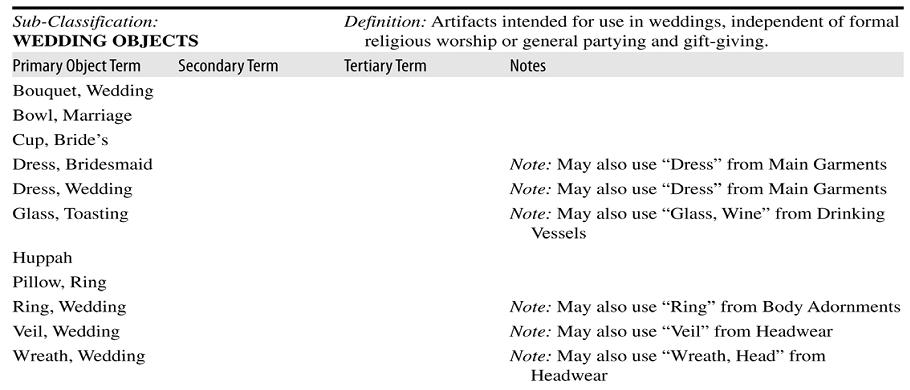New users of Nomenclature 3.0 sometimes wonder how to catalog objects that have multiple functions, or that can be named according to various characteristics. Which of the many object functions or characteristics should be considered when selecting a term?
All of them! Cross-indexing is the answer.
A single object can serve multiple functions. For example, a wedding dress could be classified with the “Wedding Objects”, but it could also be classified as “Clothing”. A vase may be classified with the “Horticultural Containers”, but also be considered “Art”. In these cases, the cataloger can select as many terms as needed to make the object accessible.
An object may also have multiple components, each of which serve a different function. For example, a flashlight keychain can be cataloged as both a “Flashlight” and a “Chain, Key”. No matter if you are searching for flashlights or keychains, this object will be found.
A single object can be named with more than one term that describes various characteristics of the object. In addition to function, object names may be defined by attributes such as form, location, material, context of use, method of construction, etc. For example, a Noank sloop may be classified as both a sailboat (describing method of propulsion) and a commercial fishing vessel (describing context of use). Using both these terms to catalog this object will ensure that it is accessible regardless of which attribute you are searching for.
Nomenclature 3.0 offers “May also use” notes which can help by offering suggestions for cross-indexing.
In the right-hand column of the hierarchical portion of Nomenclature 3.0, you will see these notes next to a number of object terms that commonly benefit from cross-indexing. Make use of these notes to improve your cross-referencing and make your collection more accessible!




